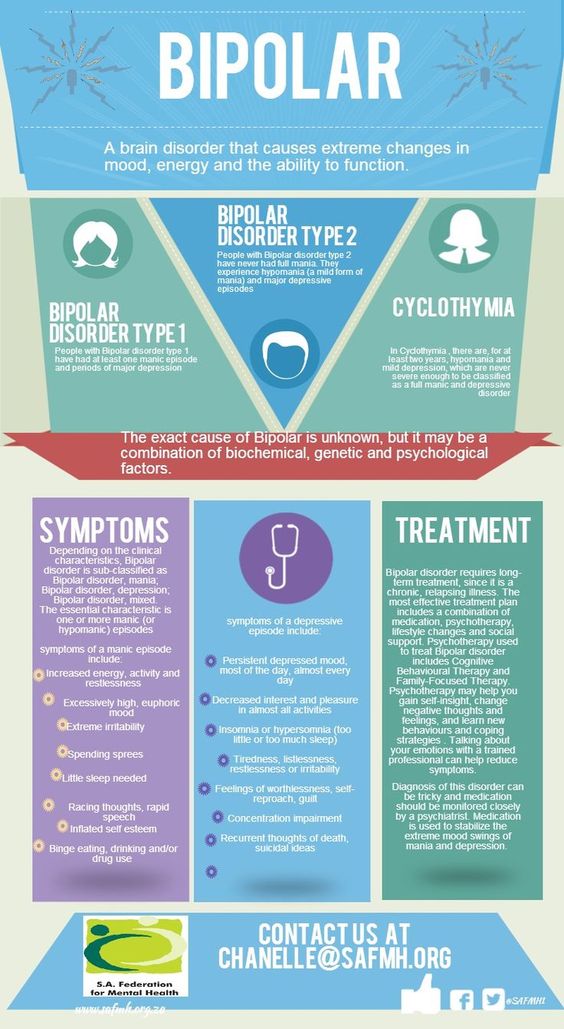Dive into the complexities of Bipolar Disorder: from manic highs to crushing lows, uncover the truths behind this misunderstood condition.
Table of Contents
- Introduction to Bipolar Disorder
- Understanding Bipolar Disorder
- Identifying the Signs of Bipolar Disorder
- Causes of Bipolar Disorder
- Living with Bipolar Disorder
- Treatment for Bipolar Disorder
- Impact of Bipolar Disorder
- Support for Individuals with Bipolar Disorder
- Bipolar Disorder in Children and Adolescents
- Conclusion
- FAQs about Bipolar Disorder
Introduction to Bipolar Disorder
Bipolar disorder is a serious mental health condition that affects many people around the world. It is also known as manic depression, and it can cause extreme mood swings and emotional changes. This psychiatric condition is important to understand because it impacts how individuals think, feel, and behave.
Many people may not know what bipolar disorder is or how it can affect someone’s life. In this blog post, we will delve into the details of bipolar disorder, exploring its causes, symptoms, and treatment options. By the end, you will have a better understanding of this complex mental health issue.
So, let’s begin our journey of exploring bipolar disorder and what it means for those who live with it.
Understanding Bipolar Disorder
Bipolar Disorder is a psychiatric condition that affects a person’s mood and emotions. People with Bipolar Disorder experience extreme mood swings that can range from very high energy and excitement to feeling very low and sad.
The Two Phases of Bipolar Disorder
There are two main phases in Bipolar Disorder: manic episodes and depressive episodes. During a manic episode, a person may feel overly happy, have lots of energy, and make impulsive decisions. In contrast, during a depressive episode, they feel very sad, tired, and hopeless.
Identifying the Signs of Bipolar Disorder
In order to understand if someone might have Bipolar Disorder, it is important to recognize the signs and symptoms associated with this condition. People with Bipolar Disorder experience extreme mood swings and emotional changes that can impact their daily lives.

Image courtesy of choicespsychotherapy.net via Google Images
Manic Episodes
During a manic episode, individuals with Bipolar Disorder may feel very energetic, overly happy, or very irritable. They may have increased energy levels and engage in risky behaviors such as reckless spending, impulsivity, or making unrealistic plans. It is not uncommon for them to require less sleep during this period and exhibit racing thoughts or talking quickly. These intense periods of excitement and high energy can last days or even weeks.
Depressive Episodes
In contrast, depressive episodes involve feelings of extreme sadness, hopelessness, or emptiness. People experiencing a depressive episode may lose interest in activities they once enjoyed, have difficulty concentrating, or experience changes in their appetite and sleep patterns. They may feel fatigued, irritable, and even have thoughts of self-harm or suicide. Depressive episodes can last for weeks or even months, impacting a person’s ability to function on a daily basis.
Causes of Bipolar Disorder
While the exact causes of Bipolar Disorder are not completely understood, researchers believe that a combination of genetic, environmental, and neurological factors may play a role in the development of this psychiatric condition.
Genetic Factors
Studies have shown that Bipolar Disorder tends to run in families, suggesting a genetic component. If a family member has been diagnosed with Bipolar Disorder, there may be an increased risk for others in the family to develop the condition as well. Certain gene variations may also contribute to the likelihood of developing Bipolar Disorder.
Neurological Imbalance
Individuals with Bipolar Disorder often have differences in the structure or function of their brain, specifically in areas that regulate mood, emotions, and behavior. These neurological changes may affect the brain’s ability to properly regulate mood, leading to the extreme mood swings characteristic of Bipolar Disorder.
Environmental Triggers
Stressful life events, trauma, substance abuse, and significant changes in routine or sleep patterns are some environmental factors that can trigger episodes of Bipolar Disorder in susceptible individuals. These triggers can exacerbate the condition and contribute to the severity of symptoms.
It’s important to remember that Bipolar Disorder is a complex condition with varying causes, and not everyone who experiences these factors will develop the disorder. Seeking professional help and early intervention are crucial in managing Bipolar Disorder and improving the quality of life for those affected.
Living with Bipolar Disorder
Living with Bipolar Disorder can present various challenges for individuals. One of the main difficulties is managing the extreme mood swings that come with the condition. These swings between feeling overly excited and energetic during manic episodes to feeling extremely low and hopeless during depressive episodes can be overwhelming. It can impact relationships, work, and daily activities, making it a constant struggle to maintain stability.

Image courtesy of infografolio.com via Google Images
Daily Management
To cope with Bipolar Disorder, it is essential for individuals to establish a routine that helps them manage their symptoms. This may involve keeping a regular sleep schedule, engaging in physical activity, eating a balanced diet, and practicing stress-reducing techniques like meditation or deep breathing exercises. It’s also crucial for individuals to take their medications as prescribed by a healthcare professional and attend therapy sessions regularly to receive the necessary support and guidance.
Treatment for Bipolar Disorder
Individuals diagnosed with bipolar disorder have several treatment options available to help manage their condition and improve their quality of life. These treatments typically involve a combination of medications and therapy to address both mood swings and emotional disorders.
Medication
Medication plays a vital role in managing bipolar disorder. Mood stabilizers are commonly prescribed to help regulate mood swings and prevent extreme highs (manic episodes) and lows (depressive episodes). Antidepressants or antipsychotic medications may also be used in certain cases to target specific symptoms. It’s crucial for individuals to work closely with their healthcare provider to find the right medication and dosage that works best for them.
Therapy
Therapy, such as cognitive behavioral therapy (CBT) or psychoeducation, can be incredibly beneficial for individuals with bipolar disorder. These therapies help individuals understand their condition, develop coping mechanisms, and learn to manage stress effectively. Additionally, therapy can provide a safe space for individuals to explore their emotions, identify triggers for mood episodes, and enhance their overall emotional well-being.
| Definition | Bipolar disorder, also known as manic-depressive illness, is a mental health condition characterized by extreme mood swings that include emotional highs (mania or hypomania) and lows (depression). |
|---|---|
| Types |
|
| Symptoms |
|
| Treatment |
|
Impact of Bipolar Disorder
Living with Bipolar Disorder can have a significant impact on a person’s life, affecting not only their mental health but also their relationships, work, and overall well-being. The emotional disorders that come with Bipolar Disorder can create challenges that require understanding and support from those around them.

Image courtesy of stock.adobe.com via Google Images
Personal Impact
Individuals with Bipolar Disorder often experience extreme mood swings, shifting between manic episodes of heightened energy and activity to depressive episodes of sadness and low energy. These mood changes can impact their ability to function in daily life, affecting their performance at work or school, as well as their relationships with family and friends.
Social Impact
The stigma surrounding mental health conditions like Bipolar Disorder can lead to social isolation and discrimination for those affected. This can make it difficult for individuals to seek help or feel understood by others. Building a support system of understanding friends and family members is crucial in helping individuals navigate these challenges.
Economic Impact
Bipolar Disorder can also have economic consequences for individuals, as managing the condition may require ongoing therapy, medication, and regular doctor visits. These costs can add up over time and create financial burdens for those living with the condition.
In society, the impact of Bipolar Disorder is also felt in terms of healthcare costs and productivity losses. By increasing awareness and understanding of mental health issues like Bipolar Disorder, we can work towards creating a more supportive environment for those affected.
Support for Individuals with Bipolar Disorder
Family and friends play a crucial role in supporting individuals with Bipolar Disorder. By providing love, understanding, and encouragement, they can help those with the condition feel supported and less isolated. Simple acts of kindness, such as spending quality time together, listening without judgment, and offering a helping hand when needed, can make a big difference in the lives of those struggling with Bipolar Disorder.
Support Groups and Resources
For additional support, there are various support groups and resources available for individuals with Bipolar Disorder. These groups provide a safe space for sharing experiences, coping strategies, and emotional support. They offer valuable resources, information, and guidance on managing the condition effectively. Moreover, connecting with others who understand what it’s like to live with Bipolar Disorder can help reduce feelings of isolation and stigma.
Bipolar Disorder in Children and Adolescents
When we talk about Bipolar Disorder, we usually think of adults. But did you know that children and teenagers can also have Bipolar Disorder? Just like adults, young people can also experience this psychiatric condition that involves extreme mood swings and emotional disorders.

Image courtesy of www.learningsuccessblog.com via Google Images
Signs of Bipolar Disorder in Children and Adolescents
Children and adolescents with Bipolar Disorder may go through different phases. One phase is called a manic episode, where they feel super energetic, impulsive, and full of big ideas. It’s like they’re on top of the world and can do anything they want. The other phase is a depressive episode, where they might feel sad, hopeless, and tired all the time. They may lose interest in things they used to enjoy and have trouble sleeping.
Challenges for Children and Adolescents with Bipolar Disorder
Living with Bipolar Disorder can be tough for kids and teens. It can affect how they do in school, how they get along with friends, and how they feel about themselves. They may also struggle with understanding their own emotions and might find it hard to control their behavior.
Managing Bipolar Disorder in young people involves getting the right help and support. Parents, teachers, and healthcare providers play a crucial role in creating a safe and understanding environment for children and adolescents with Bipolar Disorder.
While Bipolar Disorder in children and adolescents can present unique challenges, with the right treatment and support, they can learn to manage their condition and lead fulfilling lives.
Conclusion
Throughout this article, we have delved into the intricacies of Bipolar Disorder, also known as manic depression. It is crucial to understand that this condition is a psychiatric one, affecting the mental health of individuals and causing significant mood swings and emotional disorders.
We have explored the definition of Bipolar Disorder, shedding light on the two distinct phases that characterize it – the manic episodes and the depressive episodes. By understanding these phases, we can better grasp how the condition manifests in individuals.
Identifying the signs of Bipolar Disorder is essential for early detection and intervention. Exploring the manic episodes and depressive episodes can aid in recognizing these symptoms in loved ones or oneself, leading to timely support and treatment.
While the exact causes of Bipolar Disorder remain unclear, it is evident that mental health plays a significant role in its development. By acknowledging the potential underlying factors, we can work towards addressing and managing this condition effectively.
Living with Bipolar Disorder presents unique challenges, both personally and socially. By discussing the hurdles faced by individuals with this condition and exploring daily management strategies, we can empower them to lead fulfilling lives despite the challenges.
Treatment for Bipolar Disorder involves a combination of medication and therapy, providing avenues for individuals to manage their emotional well-being effectively. By understanding these treatment options, individuals can work towards stability and improved quality of life.
The impact of Bipolar Disorder extends beyond the individual, affecting their broader life and society. By acknowledging these impacts, we can foster a supportive environment for those affected by this condition, promoting understanding and empathy.
Support systems, including family and friends, as well as support groups and resources, are invaluable in assisting individuals with Bipolar Disorder. By tapping into these networks, individuals can find solace and guidance in navigating their journey towards mental health.
In conclusion, Bipolar Disorder is a complex condition that warrants attention and understanding. By unraveling its complexities, we can foster a more empathetic and supportive society for those grappling with manic depression. Let us strive to create a world where mental health is prioritized, and individuals with Bipolar Disorder are met with compassion and support.
FAQs about Bipolar Disorder
What is Bipolar Disorder?
Bipolar Disorder, also known as manic depression, is a mental health condition that causes extreme mood swings. People with Bipolar Disorder can experience periods of intense emotional highs (mania) and lows (depression).
How do you know if someone has Bipolar Disorder?
Signs of Bipolar Disorder can vary, but common indicators include drastic changes in mood, energy levels, and behavior. Someone with Bipolar Disorder may exhibit excessive happiness and energy during manic phases, followed by extreme sadness and lack of interest during depressive episodes.
Can Bipolar Disorder be cured?
While there is no cure for Bipolar Disorder, it can be effectively managed through a combination of medications, therapy, and lifestyle changes. With proper treatment and support, individuals with Bipolar Disorder can lead stable and fulfilling lives.





